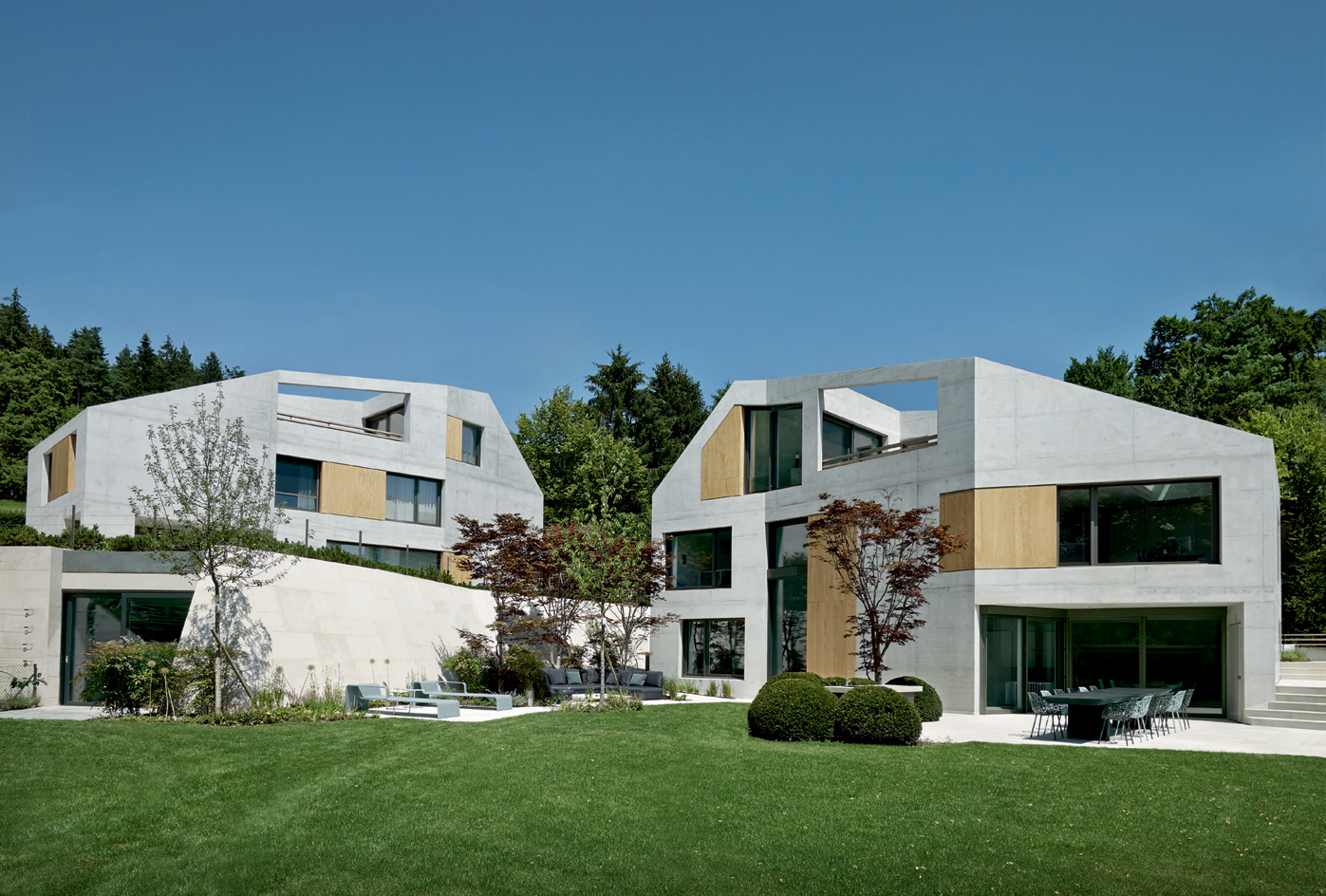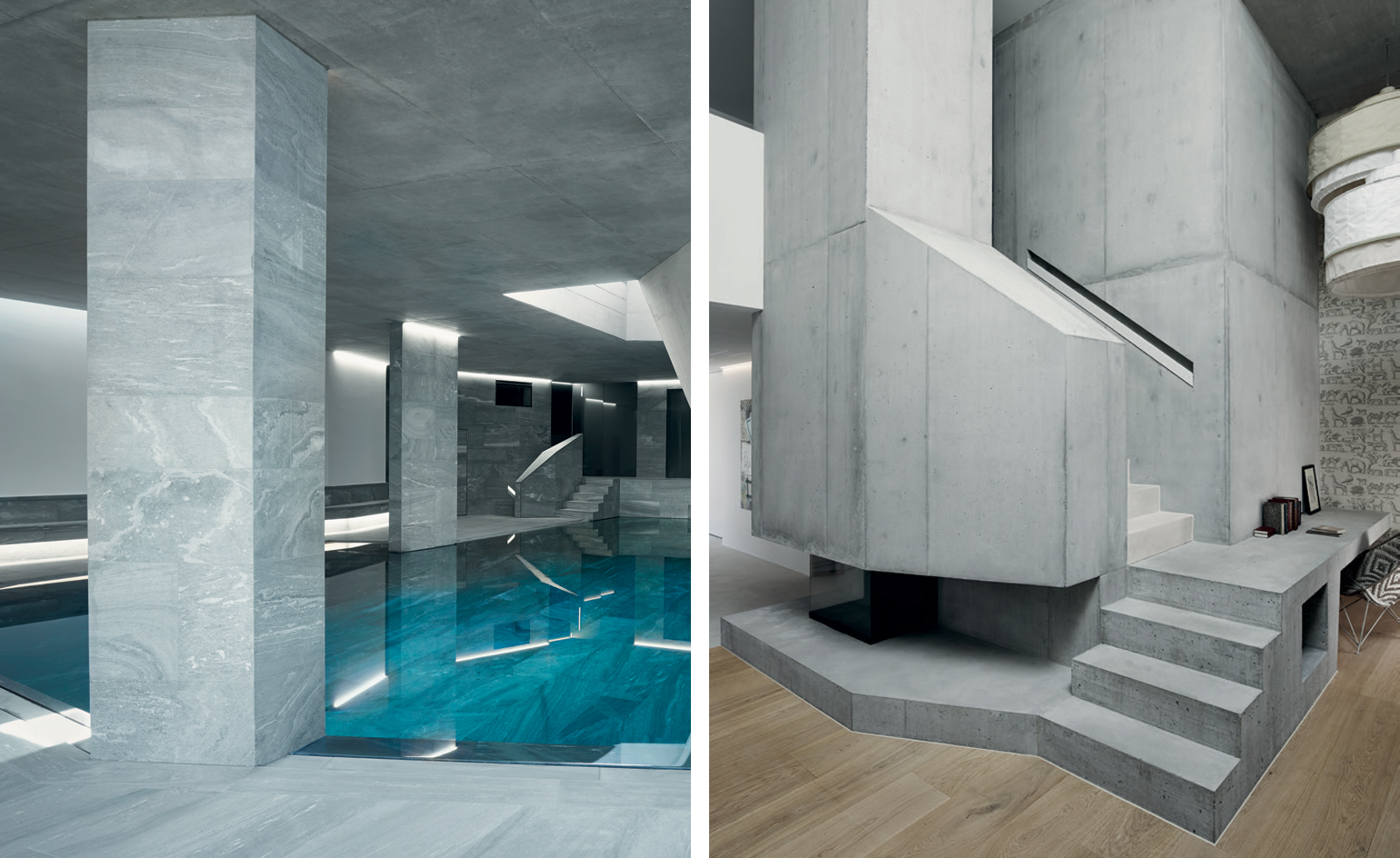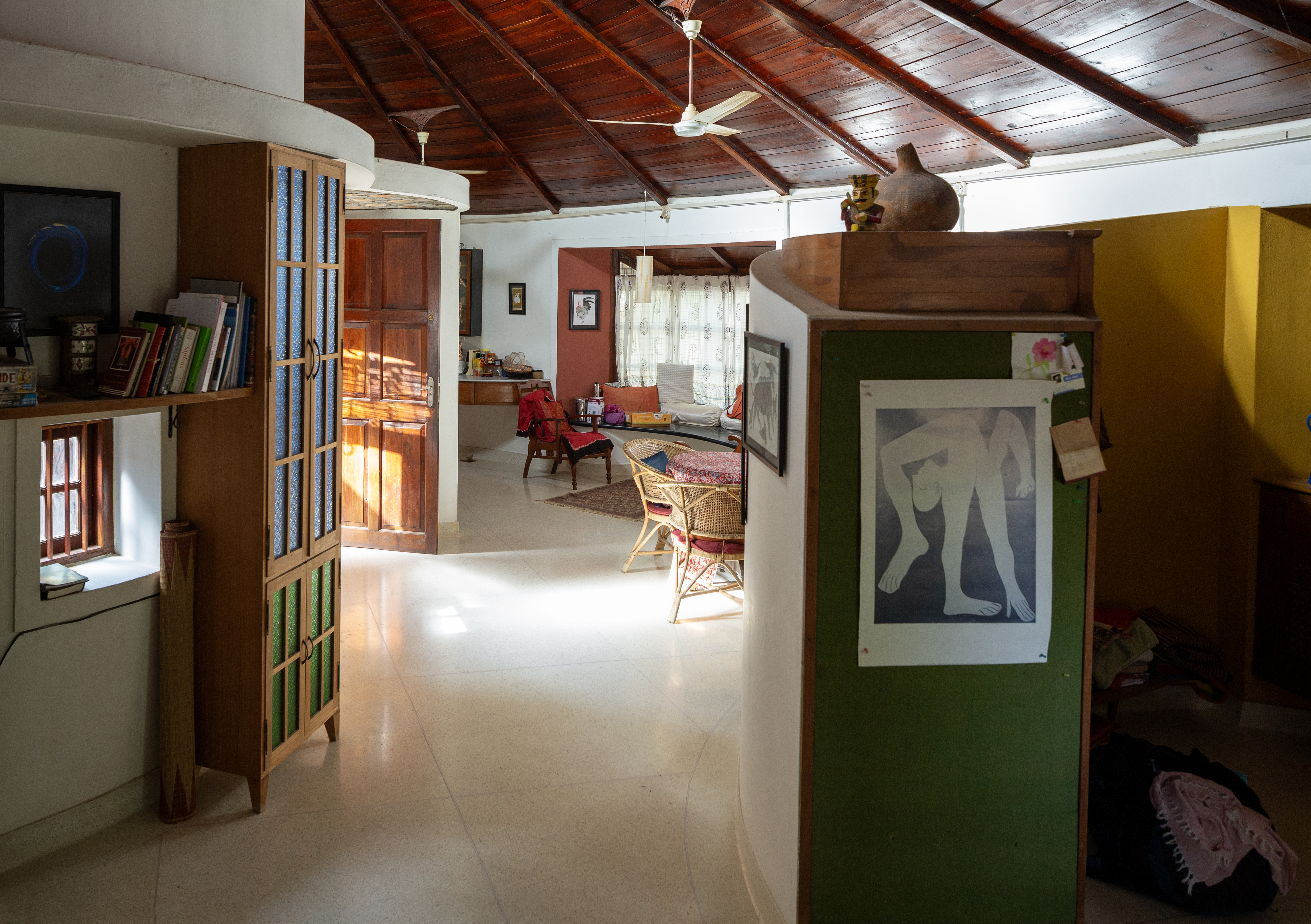Twin perks: double dipping at a pair of underground-pool-linked houses

The double house is an architectural oddity, a grouping that challenges a designer to simultaneously celebrate a social and spatial relationship with the world outside, while still preserving a sense of individuality. The Villa Ensemble, near Zurich, exemplifies one such complex, multilayered brief. Designed by Andreas Fuhrimann, Gabrielle Hächler and Carlo Fumarola of Zurich-based firm AFGH Architects, the project is a miniature fiefdom rendered in raw concrete – two single-family houses atop a generous multifunctional concrete plinth.
The two houses replace a single house used by two families. From the outset the architects took a sculptural approach, exploiting the brief to shape a monumental structure with myriad views, intersections, angles and juxtapositions. The new structures are placed at right angles to each other on a roughly square site where the most important organisational element is a change of level. The existing contours have been ruthlessly exploited, dug out, accentuated and reformed into a raw concrete strata that separates the two dwellings. The level change also provides the foundation for the basement that unifies the two houses, containing shared utility areas, a generous garage with space for six cars, and the ultimate underground pool, sitting directly beneath the house on the north of the site.
The swimming pool is a dramatic space. The practice’s long experience of working with concrete is here modulated by daylight from a ground floor window that looks to the west. Concrete ceilings are paired with a geometrically complex arrangement of marble-clad floors, walls, columns and steps, while the pool itself kinks of to the right, disappearing into the intricate dark depths of the basement to create a space rich with texture, mystique and intrigue. A roof light casts a diffuse wash of light down the tallest wall, and the reflections of water, light, marble and concrete come together to form the impression of a deep, almost ecclesiastical space. In this respect, the firm’s approach evokes the expressionism of the German architect Gottfried Böhm and the Swiss Walter Förderer, who transformed concrete into quasi-spiritual, sculptural entities.
The pool is part of a wellness complex that extends to a steam bath, sauna and gym area, as well as providing direct access to the garden. Above ground, the concrete is paired with a wooden facade and windows. ‘Concrete seemed to be the most adequate material for reproducing the sculptural qualities,’ explains Carlo Fumarola, ‘but we wanted to develop the exposed concrete by confronting it with wooden elements. They underline the residential use and add an overall warmer expression.’ The ash components also allow the building to be modified in the future by changing the profile and scale of the window openings without compromising the geological solidity of the twin houses.
That topographical theme continues throughout the interiors, where wooden floors and white rendered walls are paired with a series of monumentally solid concrete fireplaces, each providing not just a focal point for the rooms but a physical connection to the structure and basement depths. The fireplaces occupy the double height living area within each house, generous rooms which form the core around which the other rooms are arranged. This use of form as generator of plan and creator of unexpectedly powerful spatial arrangements also drove the creation of the pool. As Fumarola explains, ‘the idea of the space in between was deeply investigated in the pool area, where the proximity of the two houses and the topographical premise create an intricate and light-flooded space’.
The architects all come from artistic and architectural families, and their work has regularly intersected with the concerns and demands of the art world. Here, the requirements of two apparently separate structures set up a relationship within the site, with angles and window placement arranged to maximise views without overlooking. The roofs are treated as a ‘fifth facade’, incorporating roof terraces and angled in such a way as to become part of the landscape of the site, while deliberate paths have been arranged throughout the site – and deep within the house – to create a sense of promenade through the spaces. The end result is a powerful structure that celebrates unity and difference, creating a landscape for shared family life.
As featured in the October 2015 issue of Wallpaper* (W*199)

Pictured left: clad in marble, with a concrete ceiling, the basement pool is part of a wellness area that also includes a gym, sauna and steam bath. Right: the upper house's interiors were designed by Zug-based Studio Soius and boast a sculptural fireplace at the heart of a double-height living area
INFORMATION
For more information, visit AFGH’s website
Photography: David Willen
Receive our daily digest of inspiration, escapism and design stories from around the world direct to your inbox.
Jonathan Bell has written for Wallpaper* magazine since 1999, covering everything from architecture and transport design to books, tech and graphic design. He is now the magazine’s Transport and Technology Editor. Jonathan has written and edited 15 books, including Concept Car Design, 21st Century House, and The New Modern House. He is also the host of Wallpaper’s first podcast.
-
 How ethical is Google Street View, asks Jon Rafman in Copenhagen
How ethical is Google Street View, asks Jon Rafman in CopenhagenIn 'Report a Concern - the Nine Eyes Archives' at Louisiana Museum of Art, Copenhagen, Jon Rafman considers technology's existential implications
-
 Next-generation jeweller Rosalie Carlier is one to watch
Next-generation jeweller Rosalie Carlier is one to watchThe young jewellery designer creates sensuous but bold pieces intended to ‘evoke emotion in the wearer’
-
 Inside a creative couple's magical, circular Indian home, 'like a fruit'
Inside a creative couple's magical, circular Indian home, 'like a fruit'We paid a visit to architect Sandeep Virmani and social activist Sushma Iyengar at their circular home in Bhuj, India; architect, writer and photographer Nipun Prabhakar tells the story